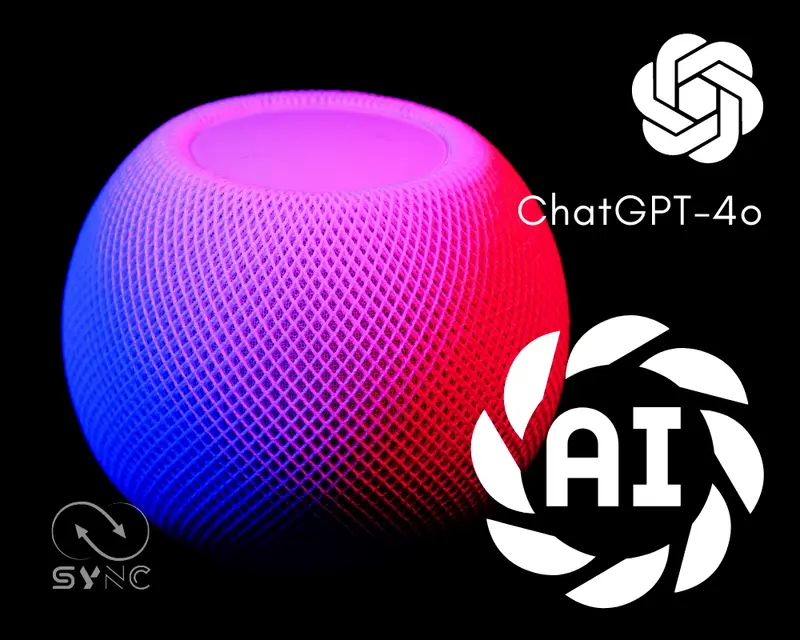Introduction to ChatGPT and Its Training
ChatGPT, developed by OpenAI, is a highly advanced language model designed to understand and generate human-like text. This model stands out in the field of natural language processing (NLP) due to its capabilities in engaging in coherent and contextually relevant conversations. By leveraging extensive datasets, ChatGPT can perform a variety of tasks ranging from drafting emails to providing customer support, making it an invaluable tool across numerous applications.
The development and training of ChatGPT involve the utilization of vast amounts of data. This data, often sourced from books, articles, websites, and other text-rich mediums, is essential for training the AI model to understand and predict language patterns accurately. The quality and diversity of this training data play a critical role in determining the efficacy of the model. High-quality data ensures that the responses generated by ChatGPT are both relevant and nuanced, thereby enhancing user interactions.
Moreover, diverse datasets enable ChatGPT to adapt to various linguistic styles, contexts, and terminologies. This diversity is crucial, as it equips the model with the ability to handle a wide range of queries and topics effectively. In essence, the richness of the training data directly influences the model’s performance, making it more adept at mimicking human conversational patterns.
In the realm of AI model development, particularly for chatbots like ChatGPT, the emphasis on comprehensive and high-quality training data cannot be overstated. The ongoing evolution of these models is largely driven by the continuous enhancement of their training datasets. As major publications contribute to this pool of data, they play a pivotal role in shaping the future capabilities of ChatGPT, ensuring that it remains at the forefront of AI-driven conversational technology.
The Role of Major Publications in AI Training
Recent developments have seen a significant shift in how major publications contribute to the training of AI models, particularly ChatGPT. Several prominent news corporations and esteemed publications have permitted ChatGPT access to their vast repositories of content. This access is a pivotal advancement, given the credibility, diversity, and richness of information these sources offer. Publications such as The New York Times, The Guardian, and National Geographic are known for their rigorous standards in journalism, providing a wealth of high-quality, fact-checked content.
The significance of this access cannot be overstated. Reputable sources bring a level of credibility that is crucial for the training of AI models. When ChatGPT is trained on data from these esteemed publications, it inherits a foundation built on accuracy and reliability. This ensures that the information generated by the AI is not only relevant but also trustworthy. For users, this translates to interactions with an AI that can provide well-informed and accurate responses, enhancing the overall user experience.
Moreover, the diversity of content from major publications contributes to a more well-rounded AI. These sources cover a broad spectrum of topics, from politics and science to culture and technology. By integrating such a wide range of information, ChatGPT can develop a more comprehensive understanding of various subjects. This diversity enables the AI to engage in more nuanced conversations, catering to a wider array of user queries and interests.
Additionally, the richness of information found in these publications plays a crucial role in improving the performance of AI models. Detailed reports, in-depth analyses, and expert opinions offer layers of information that contribute to the depth of knowledge within ChatGPT. This depth allows the AI to provide more detailed and contextually relevant responses, making interactions more meaningful and productive.
In conclusion, the collaboration between major publications and AI models like ChatGPT marks a significant milestone in the evolution of artificial intelligence. The infusion of credible, diverse, and rich information from esteemed sources enhances the accuracy, relevance, and overall performance of AI, leading to a more informed and reliable digital assistant.
The integration of content from major publications into ChatGPT training brings forth a myriad of ethical considerations and challenges, primarily revolving around copyright, data privacy, and potential biases. The use of copyrighted material from established news organizations necessitates rigorous adherence to intellectual property laws. Publications invest significant resources in creating their content, and unauthorized use could lead to legal repercussions and undermine the value of their work. To mitigate these concerns, OpenAI collaborates closely with content providers to ensure that proper licensing agreements are in place, safeguarding the rights of original creators while enriching the AI’s training data.
Data privacy remains another critical issue. The vast amounts of information processed during AI training can include sensitive or personally identifiable data, posing risks of inadvertent exposure. OpenAI implements stringent data anonymization techniques and adheres to data protection regulations, such as the General Data Protection Regulation (GDPR), to ensure that personal information is not compromised. This involves scrubbing datasets of any identifiable markers before they are utilized in training models, thereby maintaining user confidentiality and trust.
Bias is an inherent challenge in AI training, particularly when using content from major publications that may have inherent editorial slants or cultural biases. If not carefully managed, these biases can be perpetuated and amplified in the AI’s responses, leading to skewed or unbalanced outputs. OpenAI employs a multifaceted approach to counteract this issue, including diversifying training datasets and implementing bias detection algorithms. By sourcing material from a wide array of publications with differing perspectives, the aim is to create a more balanced and objective AI model.
Both OpenAI and news corporations are actively engaged in dialogue and collaboration to navigate these ethical landscapes. Measures such as transparent data usage policies, ethical guidelines for AI development, and ongoing audits of AI outputs are steps taken to ensure responsible use of content. This collaborative effort is crucial in addressing the ethical challenges and fostering a future where AI training is conducted responsibly and equitably.
Future Prospects and Impact on AI Development
The collaboration between AI developers and major publications heralds a transformative era in artificial intelligence. By leveraging high-quality information from reputable sources, AI systems like ChatGPT can achieve unprecedented levels of accuracy and relevance in their responses. This partnership has the potential to drive significant advancements in AI capabilities, particularly in natural language processing and understanding.
One of the most notable benefits of this collaboration is the improvement in AI performance. Access to a broader and more diverse set of data allows AI models to learn from a wide array of examples, enhancing their ability to generate nuanced and contextually appropriate content. This can lead to more sophisticated AI applications across various industries, from customer service to content creation, providing users with more reliable and insightful interactions.
Moreover, this collaboration could revolutionize content curation. With AI systems trained on high-quality information, the ability to filter and deliver relevant content to users can be significantly enhanced. This not only benefits end-users by providing them with more accurate and timely information but also supports media organizations in maintaining high standards of journalism. The synergy between AI and major publications ensures that content remains credible and valuable, fostering a more informed public discourse.
In the long term, the relationship between technology and journalism is likely to evolve. As AI continues to develop, its role in the media industry could expand, assisting journalists with research, fact-checking, and even generating initial drafts of articles. This can streamline the workflow in newsrooms, allowing journalists to focus on more complex and investigative reporting. Furthermore, the media industry stands to benefit from the enhanced distribution and monetization opportunities that AI-powered platforms can offer.
Overall, the collaboration between AI developers and major publications promises a future where AI systems are more adept, content curation is more efficient, and the symbiotic relationship between technology and journalism is strengthened. This not only propels the AI industry forward but also upholds the integrity and quality of information in the digital age.


